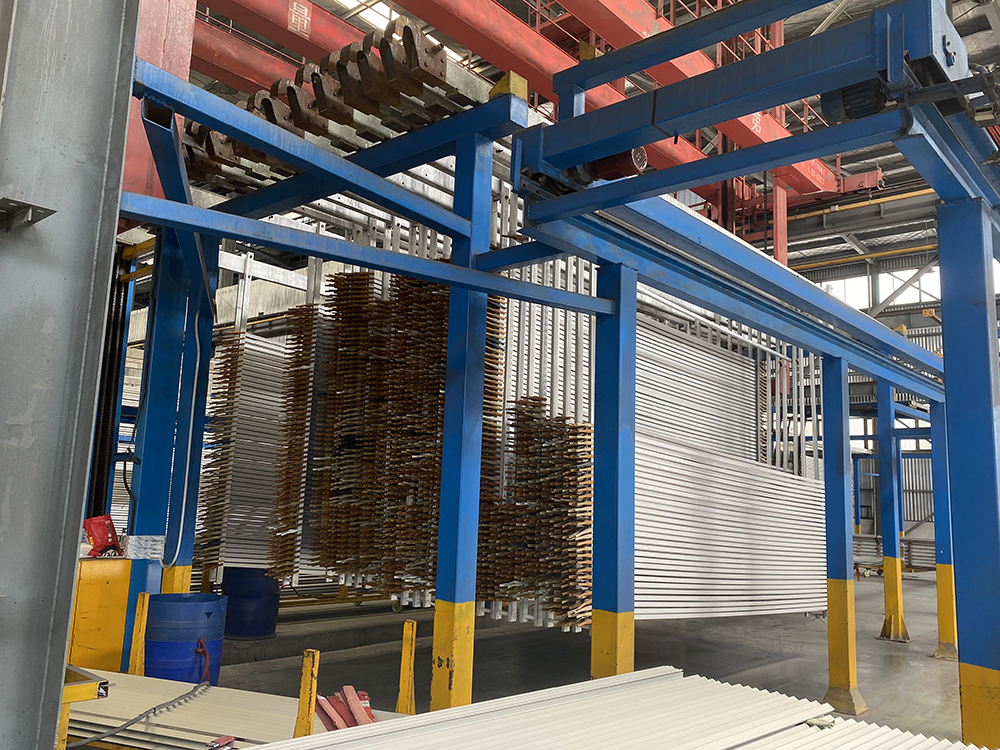Surface treatment: it can form a protective layer to protect the body on the surface of the product after being treated by mechanical and chemical methods. It can reach a stable state in nature, increase the corrosion resistance of the body and increase the beauty of products, thus improving the value of products. The selection of surface treatment types should first start from the perspectives of service environment, service life and human appreciation. Of course, economic value is also the core of consideration. After aluminum profiles are squeezed out by aluminum ingots, the corrosion resistance is enhanced through surface treatment, which makes them suitable for various working environments and increases their service performance. Do you know what treatment methods are available on the surface of aluminum profiles?
Common chemical treatments of aluminum profiles include painting, electroplating, anodic oxidation, electrophoresis and other processes. Among them, mechanical processing includes wire drawing, polishing, noise, highlight cutting and other processes. The purpose of mechanical treatment is to eliminate the uneven surface of the product and remedy other appearance defects on the surface. Chemical treatment can remove the oil stain and rust on the surface of the product, and form a layer that can better combine or combine the film-forming substances into active metal body, so as to ensure a stable state of the coating and increase the binding force of the protective layer, thus achieving the function of protecting the body.
Mechanical processing:
1. High-gloss cutting, which means cutting parts of aluminum outer layer with engraving machine, makes high-gloss appear in the cutting Field. After this kind of processing, it will become more fashionable, and at the same time, there is a special sense of sharp technology.
2. Sand blasting, this kind of skill is to clean and roughen the outer layer of aluminum with the impact effect of high-speed sand flowing. Through the aluminum alloy with sand blasting agent, its mechanical energy will become better, the anti-fatigue performance will be improved, and the adhesion and durability of the surface will also become better.
3. Wire drawing, this refers to the repeated friction with sandpaper towards the outer layer of aluminum until the wire bar is polished. Through wire drawing, the outer layer of aluminum alloy can clearly see every line and the fine luster will appear in the matte finish of this product, thus making the product more fashionable and scientific.
4. Polishing, which means polishing with mechanical external ply, reduces the roughness of the product’s appearance and makes it smoother and brighter. The polished product’s appearance is similar to that of stainless steel mirror, giving people a fashionable visual feeling.
Chemical treatment:
1. Anodic oxidation can form a uniform and dense oxide layer on the surface of the product, (al2o3. 6H2O is commonly known as Steel Jade) this kind of film can make the surface hardness of the product reach (200-300HV). If special products can be made by hard anodic oxidation, the surface hardness of the product can reach 400-1200HV. Therefore, hard anodic oxidation is an indispensable surface treatment process for oil cylinder and transmission.
2. Spraying, spraying is divided into powder coating and liquid coating, among which electrostatic coating is a popular process in the industry at present.
3. Chemical plating is a plating method that uses the redox effect of reducing agent in the same solution when no current passes (no external power), thus making metal ions restore and deposit on the surface of parts.
4. Electrophoretic coating is a novel surface treatment process. It uses electrochemical methods to deposit colloidal particles of organic resin on parts to form transparent or organic coating ply of various colors. According to the different electrification conditions of resin particles in electrophoresis paint after ionization, it can be divided into anode electrophoresis and cathode electrophoresis.
[Shanghai GAOFEN]: with the progress of science and technology, the processing techniques of the outer layer of aluminum alloy are becoming more and more diverse, and the effects of each technique on the appearance are different, so the application approaches are also different. The above are some processes of surface treatment of aluminum profiles. We must deal with aluminum profiles according to our own needs, because there are many processing techniques on the market now, so we should choose appropriate treatment methods according to our own actual situation, so as to achieve the effect and avoid a lot of troubles at the same time, hoping to help everyone.
Post time: Apr-08-2024

